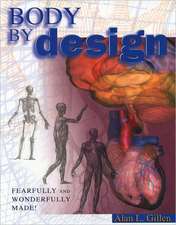Craniofacial Muscles: A New Framework for Understanding the Effector Side of Craniofacial Muscle Control
Editat de Linda K. McLoon, Francisco Andradeen Limba Engleză Hardback – 13 sep 2012
This book is the most comprehensive reference to date on craniofacial muscle development, structure, function, and disease. It details the state-of-the-art basic science of the craniofacial muscles, and describes their unique response to major neuromuscular conditions. Most importantly, the text highlights how the craniofacial muscles are different from most skeletal muscles, and why they have been viewed as a distinct allotype. In addition, the text points to major gaps in our knowledge about these very important skeletal muscles and identified key gaps in our knowledge and areas primed for further study and discovery.
| Toate formatele și edițiile | Preț | Express |
|---|---|---|
| Paperback (1) | 1412.99 lei 6-8 săpt. | |
| Springer – 15 oct 2014 | 1412.99 lei 6-8 săpt. | |
| Hardback (1) | 1418.48 lei 6-8 săpt. | |
| Springer – 13 sep 2012 | 1418.48 lei 6-8 săpt. |
Preț: 1418.48 lei
Preț vechi: 1493.13 lei
-5% Nou
Puncte Express: 2128
Preț estimativ în valută:
271.51€ • 295.02$ • 228.22£
271.51€ • 295.02$ • 228.22£
Carte tipărită la comandă
Livrare economică 21 aprilie-05 mai
Preluare comenzi: 021 569.72.76
Specificații
ISBN-13: 9781461444657
ISBN-10: 1461444659
Pagini: 356
Ilustrații: VIII, 348 p.
Dimensiuni: 155 x 235 x 23 mm
Greutate: 0.64 kg
Ediția:2013
Editura: Springer
Colecția Springer
Locul publicării:New York, NY, United States
ISBN-10: 1461444659
Pagini: 356
Ilustrații: VIII, 348 p.
Dimensiuni: 155 x 235 x 23 mm
Greutate: 0.64 kg
Ediția:2013
Editura: Springer
Colecția Springer
Locul publicării:New York, NY, United States
Public țintă
Professional/practitionerCuprins
Craniofacial Muscles: An argument for uniqueness.- Development of craniofacial muscles.- Extraocular Muscle.- Masticatory Muscles.- Laryngeal and pharyngeal muscles.- Tongue Musculature.- Facial Muscles.- Innervation and Facial Palsies.- Facial Spasm Disorders.
Textul de pe ultima copertă
Of the approximately 640 muscles in the human body, over 10% of them are found in the craniofacial region. The craniofacial muscles are involved in a number of crucial non-locomotor activities, and are critical to the most basic functions of life, including vision, taste, chewing and food manipulation, swallowing, respiration, speech, as well as regulating facial expression and controlling facial aperture patency. Despite their importance, the biology of these small skeletal muscles is relatively unexplored. Only recently have we begun to understand their unique embryonic development and the genes that control it and characteristic features that separate them from the skeletal muscle stereotype.
This book is the most comprehensive reference to date on craniofacial muscle development, structure, function, and disease. It details the state-of-the-art basic science of the craniofacial muscles, and describes their unique response to major neuromuscular conditions. Most importantly, the text highlights how the craniofacial muscles are different from most skeletal muscles, and why they have been viewed as a distinct allotype. In addition, the text points to major gaps in our knowledge about these very important skeletal muscles and identified key gaps in our knowledge and areas primed for further study and discovery.
This book is the most comprehensive reference to date on craniofacial muscle development, structure, function, and disease. It details the state-of-the-art basic science of the craniofacial muscles, and describes their unique response to major neuromuscular conditions. Most importantly, the text highlights how the craniofacial muscles are different from most skeletal muscles, and why they have been viewed as a distinct allotype. In addition, the text points to major gaps in our knowledge about these very important skeletal muscles and identified key gaps in our knowledge and areas primed for further study and discovery.
Caracteristici
Despite their critical importance, the majority of research on skeletal muscle basically has ignored this collection of muscles These muscles are complex, and therefore extremely difficult to study This book highlights novel findings on the development of these muscles























